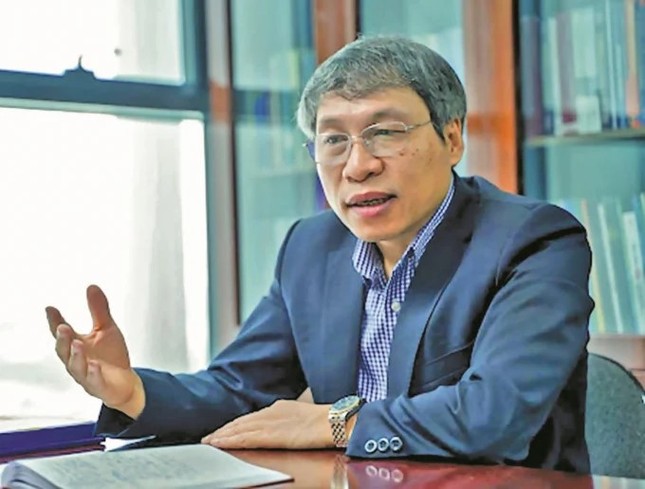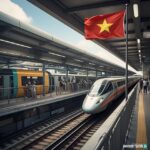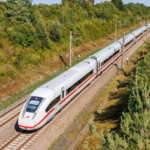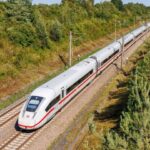Greater Efficiency for Budgetary Constraints
The proposed North-South high-speed railway is more than just a transportation project; it is envisioned as a “project of the century” aimed at creating a backbone infrastructure for Vietnam in the 21st century. One of the biggest challenges that the public is expecting a breakthrough on is the introduction of special mechanisms to turn this dream into a reality, reflecting the spirit of Resolution 68.
In terms of financing, VinSpeed proposes to take responsibility for arranging 20% of the total investment capital for the project (excluding compensation, support for relocation, and resettlement costs for land clearance), equivalent to approximately $12.27 billion. For the remaining 80% (about $49.08 billion), VinSpeed suggests borrowing from the state without interest and repaying the entire amount within 35 years. This proposal, at first glance, presents unprecedented borrowing terms and conditions. However, when compared to the traditional model of the state investing entirely through public funds and accepting prolonged operational deficits, allowing private enterprises to borrow and repay is a more innovative and fiscally efficient approach.
Indeed, statistics show that nearly 98% of global high-speed rail lines are directly unprofitable, forcing governments to subsidize most of their construction and operational costs. If Vietnam were to opt for public investment, the entire financial burden would fall on the national budget, which is already stretched thin across hundreds of other infrastructure and social projects.

In contrast, VinSpeed’s proposal could reverse this dynamic: the state would not provide capital but would instead advance funds, with the enterprise repaying them over the long term. As attorney Truong Thanh Duc, director of ANVI Law Company, analyzes, this is “not a typical commercial loan but rather an advance for the construction of a special national project, accompanied by very specific and stringent conditions and requirements set by the state.”
Deputy Hoang Van Cuong, a member of the 15th National Assembly and former vice principal of the University of Economics and Law, also assesses that this proposal is “financially more efficient for the budget and does not cause any loss to the state finances.”
“This is a project that should be funded by the state budget, and we cannot expect to recoup the investment anytime soon, if ever. Instead, the private investor wishes to borrow a smaller amount, with the state advancing the funds and the enterprise repaying them,” says Deputy Hoang Van Cuong.
According to the deputy, this is merely the state providing support to private enterprises to undertake projects on its behalf. It is commendable when private enterprises are willing to step up and take on such initiatives, and this deserves encouragement.
Sharing this view, Dr. Le Xuan Nghia, former vice chairman of the National Financial Supervisory Commission, emphasizes the need for exceptional mechanisms and breakthrough policies for this mega-project. He questions the logic of adhering to conventional practices and norms when aiming for extraordinary outcomes.
Moreover, high-speed railways are generally loss-making in most countries. Therefore, it is more advantageous for a private enterprise like VinSpeed to undertake the project and assume full responsibility rather than having the state bear the long-term operational deficits.
“With VinSpeed’s proposal, the state is assured of recouping its investment after 35 years, reducing budget constraints and public debt pressure. Isn’t that a positive outcome?” asks Dr. Le Xuan Nghia.
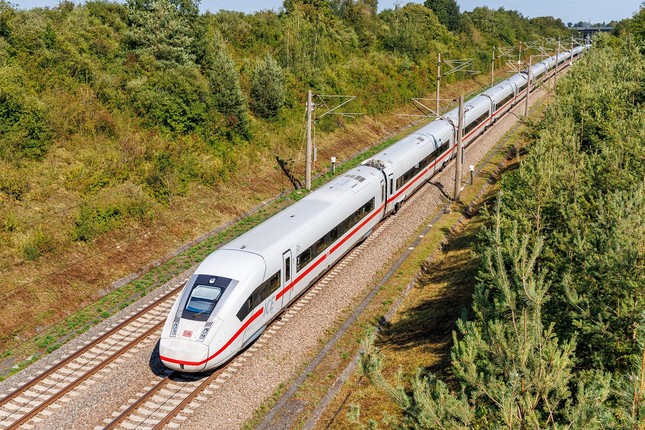
A Balanced Solution Catering to State and Enterprise Interests
From a practical standpoint, experts believe that the “loan-repayment” mechanism over an extended period is a balanced solution that mitigates risks for the state while providing sufficient leverage for enterprises to take on the challenge.
Notably, this project is not aimed at short-term profit but rather at strategic objectives: boosting economic growth, connecting regions, reducing logistics costs, establishing a North-South economic corridor, and, most importantly, propelling Vietnam into the league of nations with a modern high-speed rail industry.
Deputy Professor Dr. Bui Quang Tuan, vice president of the Vietnam Economic Science Association and former director of the Vietnam Institute of Economics, strongly advocates for a superseding mechanism encompassing credit, taxation, land, and operational aspects. “We cannot apply conventional standards to breakthrough projects,” he asserts, citing South Korea’s example, where the government provided preferential capital to large conglomerates in exchange for strategic commitments in exports, technology, and industrialization.
Sharing this perspective, Deputy Professor Dr. Tran Dinh Thien emphasizes that Vietnam will never have grand projects if it always worries about potential pitfalls. “We cannot expect private enterprises to shoulder everything without providing them with a reasonable risk-sharing mechanism,” he asserts. According to him, entrusting private enterprises with such projects, accompanied by special mechanisms, including preferential loans, transparent monitoring, and progress binding, is essential to propel Vietnam’s infrastructure and industry forward strategically.
VinSpeed’s proposal goes beyond financing and includes a roadmap for localizing the high-speed rail industry, filling a decades-long void. Instead of solely relying on imports, VinSpeed pledges to gradually transfer technology and establish a supporting industry ecosystem, mirroring VinFast’s successful foray into the electric vehicle industry within a decade.
The project also transcends mere transportation engineering. With the TOD (Transit-Oriented Development) model, VinSpeed aims to create new growth poles, transforming desolate outskirts into modern service, commercial, and tourism hubs. According to Dr. Le Xuan Nghia, this is an integral part of the project’s value proposition. “If entrusted to a highly capable enterprise like Vingroup, these projects will undoubtedly give rise to world-class, modern cities, potentially transforming the face of localities,” he asserts.
As Vietnam embarks on an era of accelerated growth, bold and decisive actions are imperative. Experts believe that if a private enterprise is willing to embrace the spirit of Resolution 68, take on responsibility, and possess the requisite capabilities, the most crucial need is to empower them with the necessary mechanisms to contribute to Vietnam’s infrastructure race with the region.
Breaking: Another Industry Giant Proposes High-Speed Rail for North-South Corridor, Promising Completion in Just 7 Years
“With a strong commitment to national economic growth, this enterprise prioritizes collaboration and partnership with domestic businesses and corporations. By harnessing the capabilities of local enterprises, this organization ensures that projects and tasks are executed with a deep understanding of the domestic market, fostering a robust and resilient economy.”
VinSpeed Proposes a Revolutionary $60 Billion Railway Project: What’s the Vision?
VinSpeed has proposed a collaboration with leading developers to create modern urban areas surrounding the high-speed rail stations, following the Transit-Oriented Development (TOD) model.


























